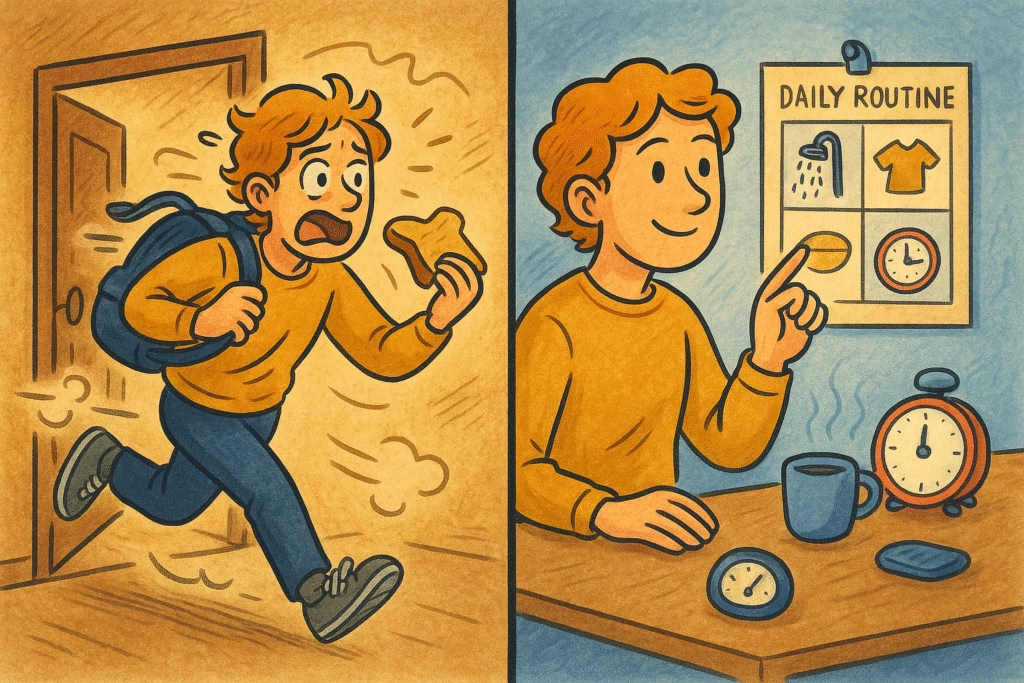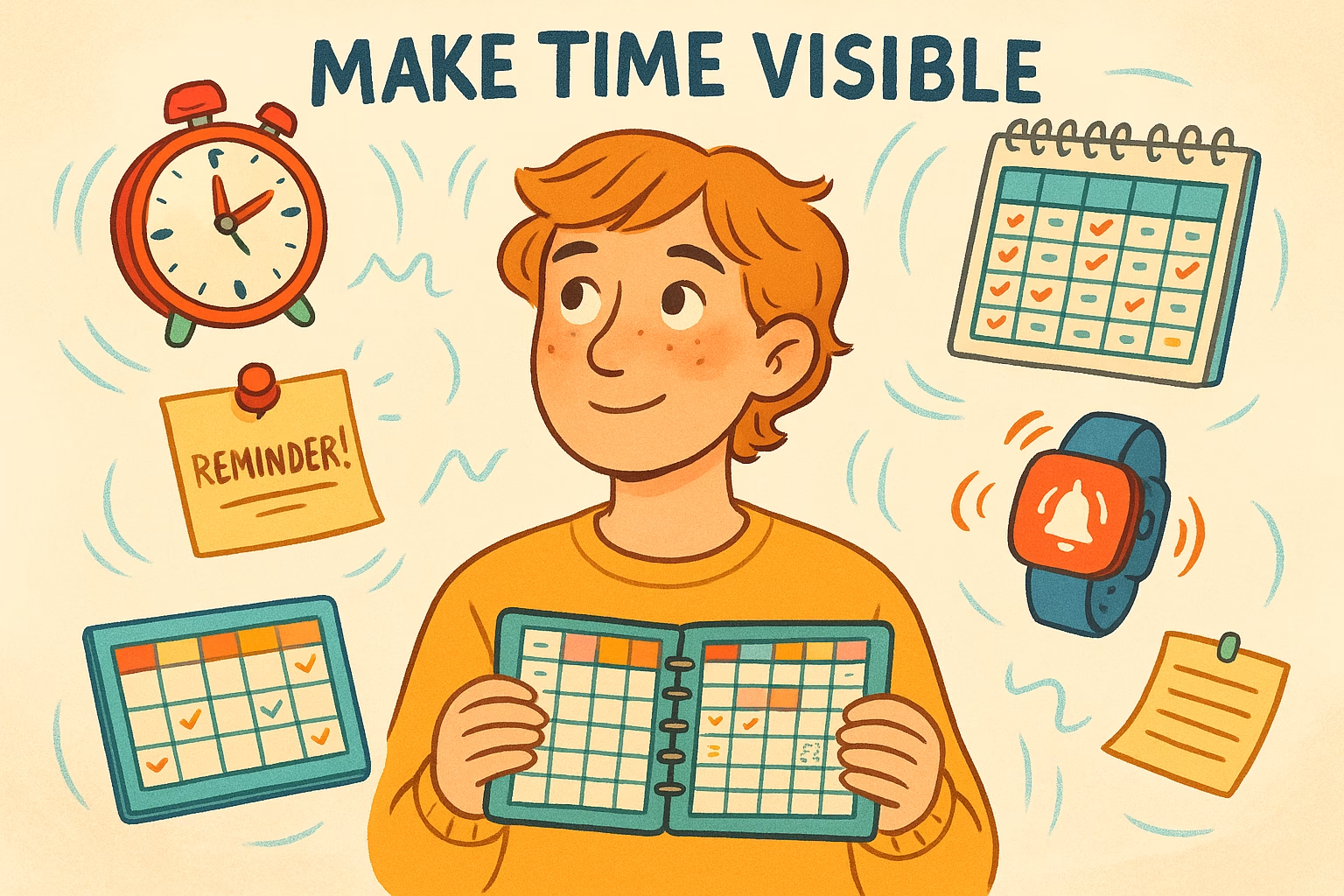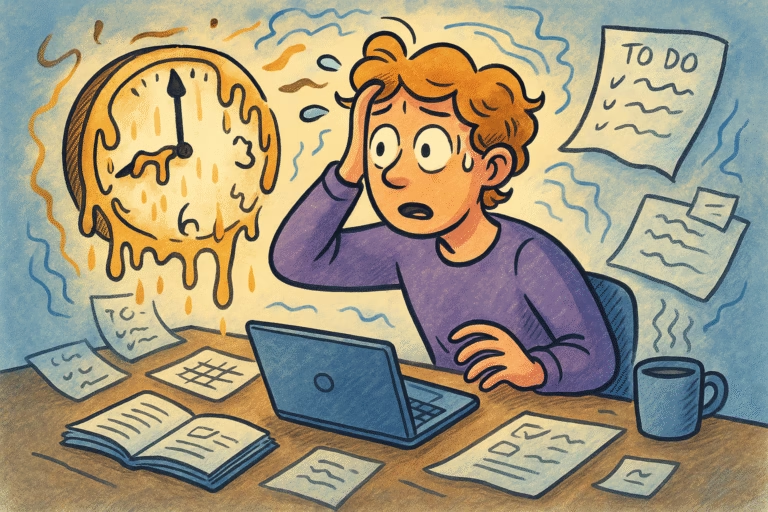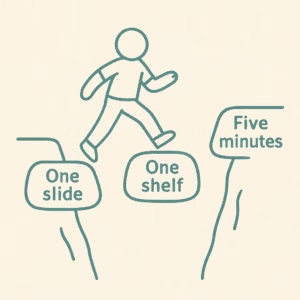If you’ve ever found yourself thinking, “I’ll just do one more thing before I leave,” only to glance at the clock in panic 45 minutes later, you’re not alone. This common experience—especially for neurodivergent individuals—is often rooted in a lesser-known executive function challenge: time blindness.

What Is Time Blindness?
Time blindness is a term used to describe the difficulty in sensing, estimating, or managing time accurately. It doesn’t mean you’re “bad at clocks”—it means your brain has trouble intuitively tracking the passing of time, transitioning between tasks, or anticipating how long something might take. It’s not about carelessness or disrespect. It’s a neurological mismatch between intention and execution.
Why It’s Not Just “Being Disorganised”
For people with ADHD or related executive function struggles, time can feel abstract or “invisible.” The brain prioritizes immediate stimuli—what’s interesting or urgent—over what’s scheduled or planned. That’s why you might miss appointments, underestimate how long a task will take, or struggle with transitions.
Time blindness often shows up in:
- Chronic lateness despite good intentions
- Overbooking or procrastinating on tasks
- Losing track of time while hyperfocused
- Struggling to shift from rest to action (and back again)
Real-Life Impact
Time challenges can strain relationships, affect employment, and chip away at self-esteem. The frustration isn’t just external. Many people with time blindness beat themselves up for what they see as “lazy” or “irresponsible” behaviour, even when they’re trying their best.
How to Make Time More Visible
Good news: time can be made more concrete, visual, and manageable with some practical strategies:
Use Visual Timers
Timers like the Time Timer or apps like Visual Countdown can externalize the passage of time. Seeing time shrink helps the brain anchor to reality.
Anchor Your Day With Time Landmarks
Create “start and stop” rituals (e.g., a morning coffee, an end-of-work playlist) that help signal transitions and orient your body clock.
Break Tasks into Real-Time Blocks
Instead of saying “Work on project,” say “25 minutes to outline section 1.” Tools like Pomodoro or Forest app add structure and reward.
Practice Time Estimation
Before starting a task, guess how long it will take. Track the actual time. This feedback loop builds more accurate time sense over time.
Use Forward Planning
Look ahead at your calendar—not just the current day. Previewing tomorrow or the week ahead builds time awareness beyond the now.

Compassion First
If you live with time blindness, you’re not broken—you’re wired differently. Tools help, but so does self-compassion. Surround yourself with systems, not shame. Celebrate progress, not perfection.




